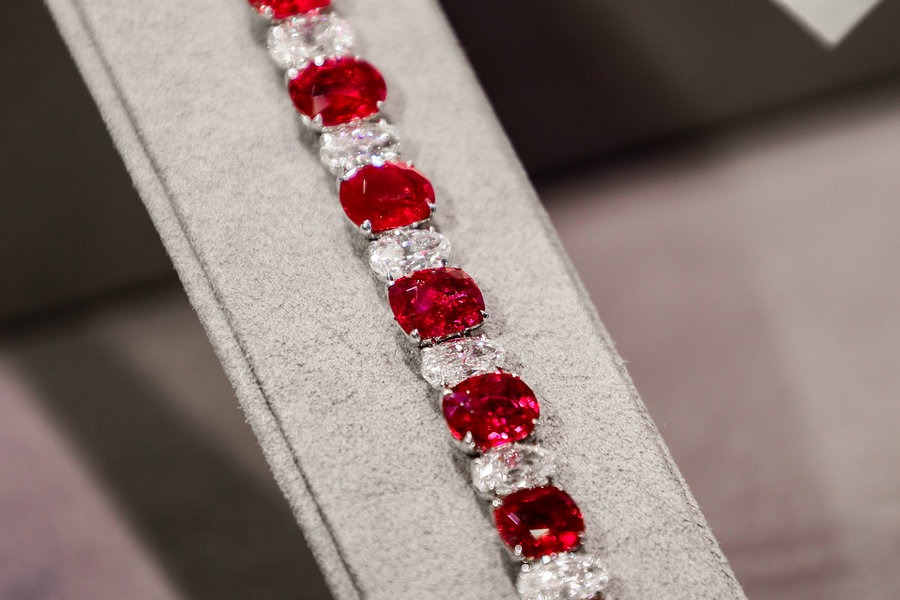Moving market


Young people in China are showing a preference for domestic brands. Other than being cost-effective, Chinese brands are becoming stylish and innovative, with improvement in the quality of products. Contributing to this is a stronger cultural confidence among young Chinese.
About half of the interviewees from a total 4,109, aged from 10 to 19, told a survey in November conducted by Tencent Marketing Insight that they accepted or preferred Chinese brands compared with foreign when choosing a commodity. The TMI report, based on 26,815 questionnaires across 60 primary and middle schools in nine cities, was recently released.
Luo Shuyuan, 18, a student in Shanghai, says most of her skincare products are Chinese. "They are reliable, free of irritating ingredients, cheaper and suitable for young people."
In terms of apparel, Luo tends to pay 200 yuan ($28.4) to 300 yuan each time for made-in-China clothes. "Their quality and design are no worse than foreign big-fashion brands."
She gets 400 to 500 yuan per month as pocket money, and most of her clothes are Chinese-made, because of the "quality, price and fitness".
Wu Weicheng, 17, a high school student in Shanghai, says most of his classmates use Chinese phone brands, such as Huawei, Xiaomi, Vivo and Oppo.
"Its (Huawei phone's) technology and functions, such as the camera, are almost as advanced as that of Apple. But the price is cheaper," he says.
A fan of apparel brand Li Ning, Wu says the Chinese brand impresses him with the bright colors of its clothes, offline stores, as well as the logo in the original form of Chinese characters, which is "very special". "You can tell it's a Chinese brand from the first sight."
He spends two-thirds of his pocket money-500 to 600 yuan monthly-on shopping, 90 percent of which is used in Chinese brands.
Fang Ying, 16, a high school student in Shanghai, says Chinese products are cheaper, practical and have a long service life. She says she has used a Xiaomi phone for two years. "It's running smoothly and can take high-definition photos."
She says she prefers Chinese milk brands, such as Mengniu and Guangming, although overseas dairy products are known as being more nutritious. "I like them because they often bring back my childhood memory of watching the ads on TV and seeing the products on store shelves."
She says domestic brands are innovating, so young consumers have become more confident in them, and the products are more recognized by the public today.
The post-2000 generation gives themselves 9.4 points out of 10 in terms of "a sense of national pride", ranking top among all generations, the TMI report says quoting May data from the Social Survey Center of China Youth Daily.
According to the TMI report, the post-2000 generation grew up with the economic development of China and the rise of its global influence. They also witnessed major events, such as China's first manned space flight in 2003, the 2008 Beijing Olympics and the Shanghai Expo in 2010.
Domestic animation and TV shows have also developed. And, traditional cultural elements, such as the Palace Museum and Mogao Grottoes in Dunhuang, Gansu province, have given the youth a sense of self-confidence, Zhang Jing, deputy general manager of key accounts at Tencent Marketing Solution, tells China Daily.
"Buying, using and showing off Chinese products have become a fashion," Zhang says.
The consumption habit of youngsters have formed amid rising domestic brands, according to the report.
Wu says he learned from his school and the Chinese media that Chinese automobiles have gone global, and that Chinese companies are building bridges, subways and other infrastructure in Africa. He also found about China's first homegrown aircraft the C919 and Fuxing bullet trains.
Xu Feifei, an associate partner at global consultancy Prophet, says the rising popularity of domestic brands among young consumers reflects their demand for uniqueness and practicality.
"They are no longer blindly chasing big foreign brands. Instead, they are willing to learn about commodities through their own trials and share the experience with friends," she says, adding that the 1960s and '70s generations favor and are more loyal to foreign brands than younger people.
Li Ning was named top 50"most relevant brands for Chinese consumers" in 2019 by Prophet in September, and has become a typical example of a Chinese brand. Its success, according to the report, was because it interpreted traditional Chinese culture in a modern and fashionable way to attract young consumers.
Chinese consumers think domestic brands, compared to international, are better at meeting their demands and establishing emotional links, according to Prophet's top 50 brands' list.
"With the rise of production and better quality control, made-in-China has shaken off the stereotype of 'poor quality'. Many foreign brands produce their products in China," Xu says.
Shi Saifei, the sales director for consumer goods at Tencent Advertising and Marketing Service, says Chinese commodities have turned from competing for low prices to seeking higher quality and differentiation. The homegrown technologies and special Chinese cultural elements also make them unique, which meets such demand of young people, Shi adds.
Xu says the rise of Chinese brands is at the initial stage, with few getting noticed globally, because many Chinese companies don't attach enough importance to brand construction. Consumers in China now care more about practicality, price and appearance design, so both homegrown and international brands need to invest in research and development, learn about target consumers and provide products, services and consumer experiences, Xu adds.
Ji Wei, a founding managing partner of Meridian Capital, says that amid the wave of globalization, the boundary between foreign and Chinese brands has become vague. "What really matters is whether the products can meet the specific demands of consumers."
With China's success in e-commerce and mobile payment, Chinese consumers are trying out new things, while the marketing and selling channels on the supply side enjoy lower costs and higher efficiency, which has created more space for new brands, she says.
Since the post-2000 generation has less economic pressure compared to older Chinese and are more familiar with the online world, Chinese brands should emphasize being different, adapt products to young people's tastes and enhance the emotional resonance, Ji says.
Contact the writer at chenmeiling@chinadaily.com.cn



































